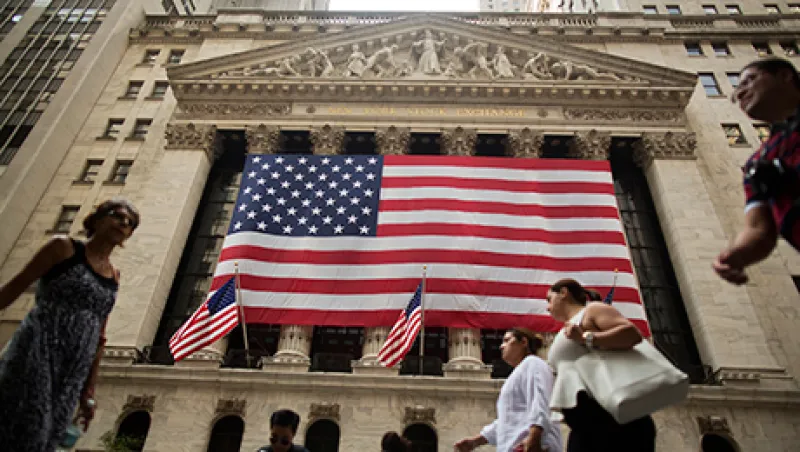Volatility is back in financial markets after an extended absence — and you had better get used to it.
“Given that volatility will be around for a while, it leads to managing a mix of risks and opportunities,” says Mohamed El-Erian, chief economic adviser at Allianz in Newport Beach, California. The risk is that investors, he says, “reduce risk exposures in the midst of price overshoot and technical corrections that prove both temporary and reversible.” And the opportunity consists of “windows to buy good assets at overly depressed prices.”
To accentuate the positive, elevated volatility will create some excellent buying opportunities. But where? Experts’ advice runs the gamut from buying risk assets at bargain prices to sticking with safe, low-return assets.
The CBOE Volatility index, or the VIX, which measures expected volatility for the Standard & Poor’s 500 index, closed above 20 for 30 straight sessions through October 2, the longest such streak in three and a half years. Meanwhile, the ten-year Treasury yield has bounced between a nine-month high of 2.43 percent on July 13 and a five-month low of 1.91 percent on October 2, standing at 2.11 percent on October 8.
Investors should realize that “this represents a long-awaited normalization from a period of unusually low volatility,” says Russ Koesterich, global chief investment strategist at BlackRock in San Francisco. He and others say a number of factors, including slowing global economic growth and uncertainty about the Federal Reserve’s path to raising interest rates,will cause that roller coaster ride to continue.
“We’re mired in a deflationary recovery,” says Brian Leung, global investment strategist for Bank of America Merrill Lynch in New York. “There’s a confluence of the coming start of Fed tightening and [slowing growth] of global currency reserves. Combine that with low profits and anemic growth, and you get higher volatility.” S&P 500 earnings were little changed in the third quarter, and the Atlanta Fed’s forecasting model puts gross domestic product growth at just 1.4 percent for that period.
The volatility also reflects investors’ loss of faith that central banks can maintain economic and financial stability, according to El-Erian. And the fact that banks have reduced their presence in financial markets as a result of post–financial crisis regulation is boosting volatility. “There is also the role of some relatively new products whose construct and management can exaggerate short-term price movements,” El-Erian says. Those would include leveraged and inverse exchange-traded funds.
So, how should investors deal with this unsettled environment? BofA Merrill Lynch’s Leung counsels safety. “Going forward, high-quality stocks should outperform,” he says. Those stocks are undervalued, as investors have sought low-quality, high-return equities in recent years. High-quality stocks historically tend to outperform in economic slowdowns and bear markets, Leung notes. He defines high-quality stocks as companies with predictable and persistent profits, low debt and strong corporate governance.
When it comes to bonds, Leung recommends investment-grade over high-yield to complement high volatility. Yet diversification to fixed income might not necessarily be the answer. Nicholas Colas, chief market strategist at New York–based brokerage Convergex, says, “Many investors are probably overexposed to equities in general,” as a result of the six-and-a-half-year bull market. “The classic diversification would be to fixed income. But that’s not as attractive with rates so low.” So the best alternative for some investors may be cash, he says.
BlackRock’s Koesterich also sees limited benefits in Treasuries. As investor fears focus on Fed tightening, “you may not get the same diversification from stocks and long-dated Treasuries,” he says. “Both stocks and bonds will be reacting to the same fears, so the correlation between stocks and bonds will rise.” Low-volatility investment funds may prove to be an attractive choice, he says.
But Koesterich doesn’t recommend abandoning risk assets such as stocks and some credit investments, however, since he doesn’t foresee a global or U.S. recession. “There will be a repricing of risk assets as the Fed starts to raise rates,” he says. “But I think they will still perform, albeit with more volatility, because we’re in an environment where riskless assets continue to pay low returns.” Valuations aren’t cheap for risk assets, Koesterich acknowledges. “But they’re reasonable enough to get a better return than exiting risk assets altogether.”
Get more on equities.







